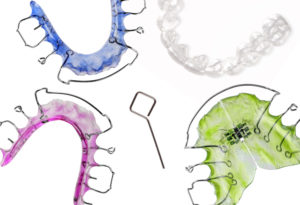When is the best time to begin orthodontics
When is the best time to begin orthodontics?
The American Association of Orthodontists (AAO) recommends that all children see an orthodontist by age seven and sooner if something is obviously wrong before age seven. Fortunately, many young patients don’t need anything more than observation while the permanent teeth are growing into place, however, some young patients may have problems that will not, or should not wait. Most orthodontic problems are inherited and cannot be totally prevented however something can usually be done before these problems become more difficult and more expensive to manage. It is advisable to consult with an orthodontist prior to having your dentist remove any baby teeth or permanent teeth. To ensure the best overall dental and facial development all patients should have an orthodontic consultation sometime between the ages of three and seven. By age 7, the first permanent molars and incisors have usually come in and cross-bites, crowding and protrusions can be evaluated. The orthodontist can identify current or anticipated future dental problems and determine the best time for treatment. Any ongoing oral habits can also be evaluated at this time such as thumb sucking, mouth breathing, or finger sucking.
It is advisable to consult with an orthodontist prior to having your dentist remove any baby teeth or permanent teeth. To ensure the best overall dental and facial development all patients should have an orthodontic consultation sometime between the ages of three and seven. By age 7, the first permanent molars and incisors have usually come in and cross-bites, crowding and protrusions can be evaluated. The orthodontist can identify current or anticipated future dental problems and determine the best time for treatment. Any ongoing oral habits can also be evaluated at this time such as thumb sucking, mouth breathing, or finger sucking.
What are the benefits of early treatment?
If there are obvious problems which exist that could be intercepted or prevented from getting worse your orthodontist may advise you to have your child undergo a First stage-Orthopedic Treatment. Orthodontic treatment can be initiated on many types of bite problems before all of the permanent teeth are present. Orthopedic treatment is necessary in many cases when the child’s teeth, lips or jaws don’t look normal for their age. Some reasons from considering orthopedic treatment are to:
Minimize severe malocclusions
Improve facial appearance and self-esteem
Correct functional problems
Minimize the effects of abnormal growth patterns
Reduce protrusion so that front teeth are less susceptible to injury
Reduce the need for or minimize the number of permanent teeth extracted
Reduce a serious mismatch in the growth of the upper and lower jaws
Eliminate adverse habits such as thumb/finger sucking
Make the treatment with braces easier and shorter



